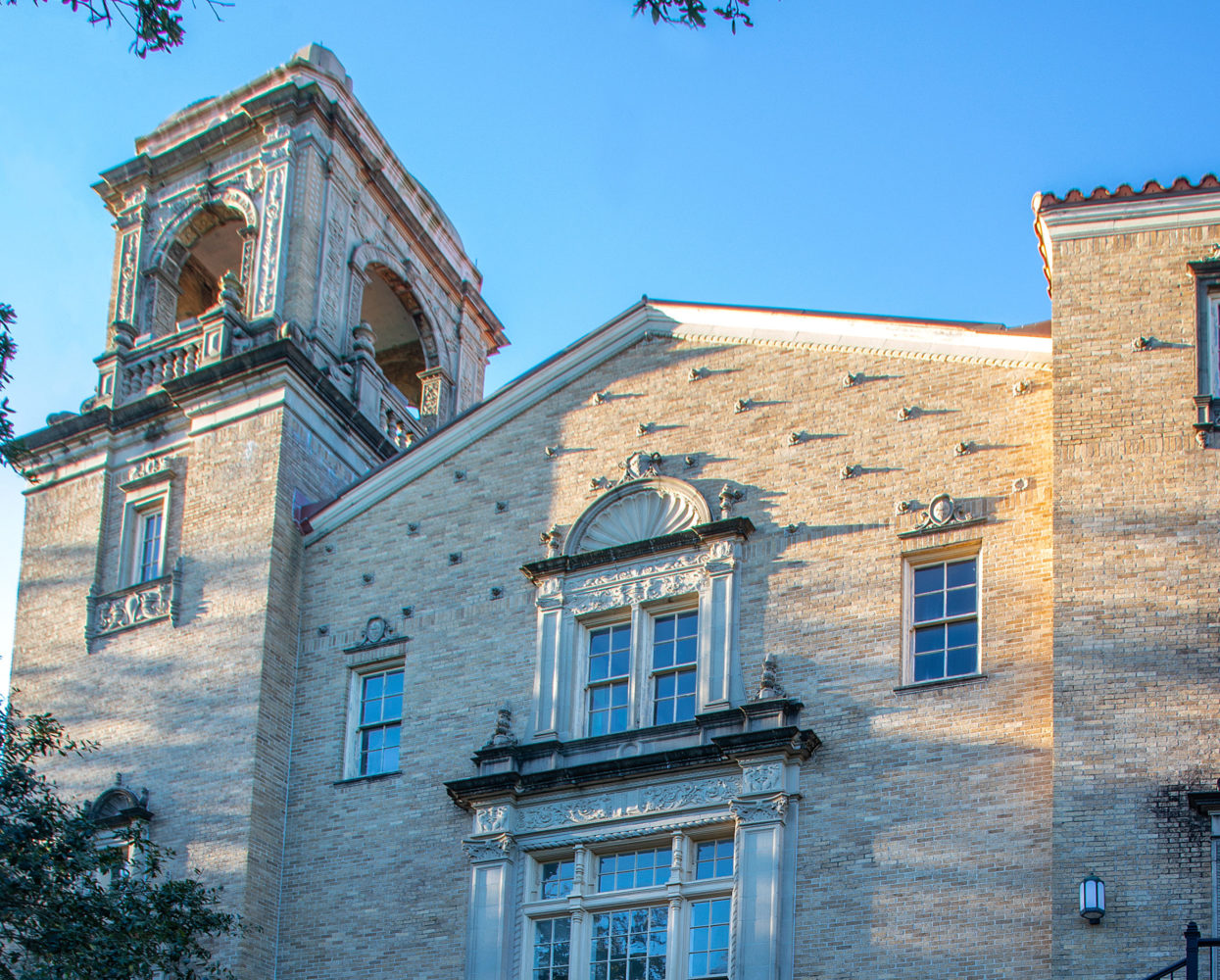DR. MICHELL THURMONDâS FAMILY has a long history with the house at 1410 Philip St., one of eight houses built in 1867 by Henry Howard for John Hall and called variously âHallâs Row,â âBrideâs Row,â and âThe Seven Sisters.â Thurmondâs grandparents, Cody and Dick Baumbach, lived in the house for over 30 years and renovated the house extensively in 1966, enclosing the front porch and side gallery and removing the wall between the living and dining rooms. Extensive use of local, reclaimed materials, such as the fan windows, French doors and shutters and doorknobs can be seen throughout. A decorative wood paneled wall in the dining room was installed using pocket doors from a school. Perhaps the most ingenious use of reclaimed materials is the 10-foot doors throughout the house which give the house grandeur unusual for a shotgun. Dr. Thurmond recalls her favorite activity in those days: climbing to the top a tall ladder in the large closets off the master and dining rooms to explore her grandmotherâs âtreasuresâ on a rainy day. After leaving New Orleans in 1972, Thurmond returned for her medical residency in 1994 and lived in the home from 1997 to 1999.
âThe home was sold in 1999. The interim owners âmodernizedâ it, renovating the kitchen and bathrooms and gutting the side courtyard in favor of off-street parking. When Thurmond drove by the home in 2012, returning again to New Orleans, and saw it for sale, she could not resist the opportunity to buy her family home.
âAn extensive collection of family heirlooms, antiques and artwork were moved to GA in 1999 and returned in part when Thurmond moved back in 2012. The colorful rugs in the living and dining rooms were ordered specifically for the house in Kashmir and were sewn by a family of eight over a period of one-and-a-half years. The Baumbachs met the weavers and according to their weaving custom, they wove in the name of the owner and the date of completion, misspelling the name as Baimback.
âThe cabinet across from the front entry was originally made for the den, copied from the large breakfront that was in the living room at that time. Other pieces that were in the Baumbachsâ home that returned include the high boy in the master bedroom, twin beds in the guest bedroom, a brass and wood trunk coffee table, a love seat, and various chairs, small tables and rugs. The charming brass chandelier that hangs in the dining room was sourced by Thurmondâs grandmother from the Columns Hotel, which the Baumbachs owned at the time. While Thurmond did not attempt restoration of the kitchen and bathrooms, she did return the courtyard to its former glory â complete with her grandparentsâ fountain and patio furniture.
âThurmondâs collection of art is varied and extensive. The painting above the mantle in the living room is by Edward Rice of South Carolina, whose work is housed in numerous permanent collections including the Ogden. The pieces over the couch in the living room are from Karen Greenâs first show after the death of her husband, the writer David Foster Wallace. A large photograph opposite the guest bath shows the undefeated, SEC champion 1929 Tulane football team. Thurmondâs grandfather, quarterback, is top right. The game ball can be found on the bread rack in the den.
Become a Member!
Become a member today and start enjoying discounts on tours, merchandise and more!
Learn MoreMembership has its perks!
Help us preserve the unique character of our vibrant city and become a member today!
BECOME A MEMBER





